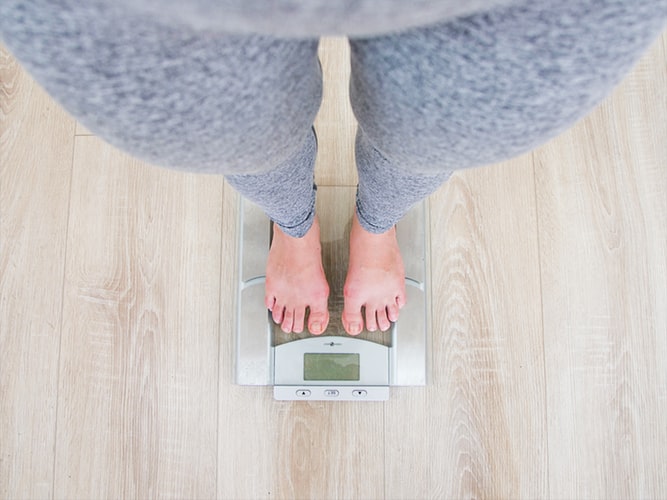
The “Secret” to Permanent Weight-Loss
I grew up in the ‘90s when if you were one who wanted to dunk a basketball or simply be the greatest at whatever you were doing, you had to wear a pair of Jordan high-tops. That’s what was hammered into my adolescent brain.
To this day, I have never dunked a basketball, but damn if I didn’t look cool trying. I was easily influenced by all the marketing of those flashy shoes because the folks who were pedaling them knew how to make me want their product. They used one of my idols, Michael Jordan, to do it. That’s what’s happening today in our society as it relates to weight loss. Just follow the diet plan your favorite retired football player is on and you’ll look just like him. Who cares if you have to eat pre-packaged meals and you don’t really learn about nutrition because you don’t have to think about it.
We have never been more out of shape as a country. The National Institute of Health reports that more than two-thirds of Americans, or 68.9 percent, are overweight or obese. How is that possible in a society that has the resources and technology to combat this epidemic? As a society, we have become so skeptical of weight-loss programs, diets, and gyms because “we’ve tried them all” to no avail. An article written in 2012 reported that the average woman has tried 61 diets by the age of 45. That blows my mind! Is it possible that not even one of those 61 diets worked?! You bet it is! This is why marketing companies have brought in the professional athlete to push the “latest and greatest” diets.
There is no secret to permanent weight loss. There is, however, a tried and true process, that if followed, is sure to help you achieve your weight-loss goals.
First, you want to be sure you’re consuming the correct amount of food for your unique and specific needs. A one-size-fits-all approach, a template-based diet will not yield permanent results. Consuming the right amount of protein, carbohydrates, and fat based on what your body needs are crucial. Next, we focus on meal spacing. I don’t want my clients to live and die by the clock, but rather eat when they’re hungry. After a smaller snack, there might only be two hours or so until the next meal, but after larger meals, there might be up to four to five hours between meals. The key is to space your meals out in a manner that will support your metabolism so you’re burning body fat more effectively between meals.
Quality of food is important as is the quantity at any one meal. How you structure all your meals within a given day is key. Eating enough food to hit your food intake goals for the day isn’t going to lead to success if the food you’re consuming is mainly donuts and pizza. If you’re eating nothing for breakfast, a ‘healthy’ sandwich from Subway and dinner is the largest meal of the day, you’re going to be hard-pressed to achieve your weight-loss goals.
I have clients who eat four, five, and even six meals per day. I like balance at most meals as well, but there are specific contexts where you can use great flexibility and bend the rules—still accomplishing your goals! That’s the perfect blend of structure and flexibility people need to succeed. And that doesn’t come in single-sized packages for every person. Not even Michael Jordan.



